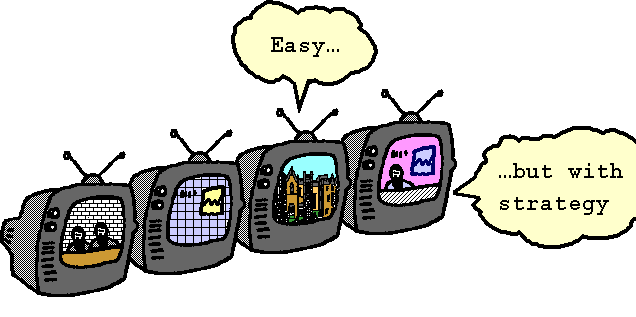|
|
Evolving multiple media capabilities... |
|
|
We looked at children's media capability - for example on BBC's Horizon "The end of TV" (November 1996) you can see them in the 'lab watching 4 TV programmes at the same time with a tight eye to grammar, syntax and genre. They do it well, of course and answer tough, individual questions. Similarly, with Nortel, we built a research stand at Tomorrow's World Live and tested adults for their multiple media capabilities (the stand said "Are you ready for Broadband?" - they were). We looked at children's computer game playing too (they were in a wise cycle of Observe, Question, Hypothesise, Test), and are looking at the future of TV and other socially pervasive media. We like what we see and predict. |
||||||||||||||||||||
|
|
In a world where success once lay only in mastering simple text - reading, writing - listening to reading perhaps - narrow band would be enough, maybe. In the list below which would you
include or exclude? Check the boxes of the ones you
value, then consider the significance for interpersonal
two way contributions / communication in learning...
With NOTSCHOOL.NET many of the children fell out of the school system because the corridor for their success was too narrow. This should not be necessary. |
||||||||||||||||||||
|
|
Summary 1: We are all evolving new media capabilities. |


